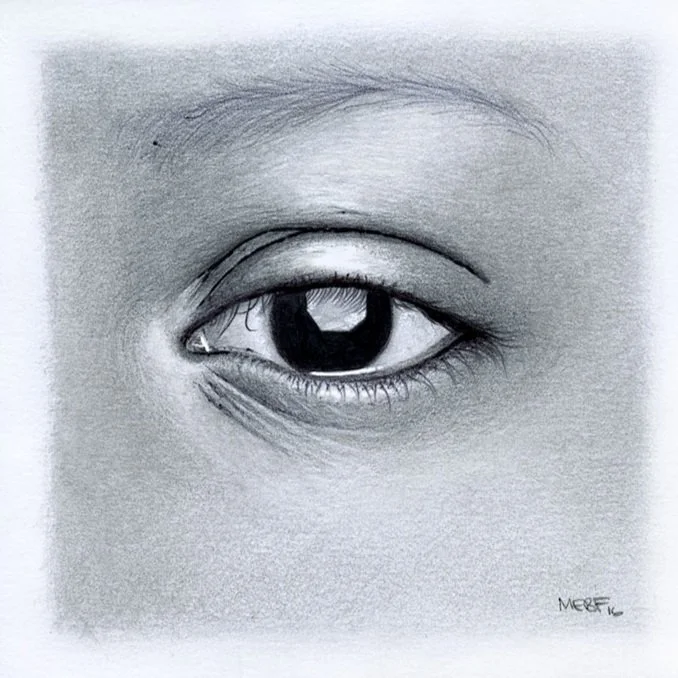
THE ART PRIZE ARCHIVES
What's ArtPrize? It's "an open, independently organized international art competition which takes place for 19 days each fall... Any artist working in any medium from anywhere in the world can participate. Art is exhibited throughout downtown Grand Rapids—museums, bars, public parks, restaurants, theaters, hotels, bridges, laundromats, auto body shops, vacant storefronts and office spaces." I participated in this event from 2014-2018.
CONNECTIONS
I started this piece earlier than any of the others - a full 11 months before the show’s kick-off. It was very free-form only having a grid of diamond shapes and an idea that I wanted to draw a lot of eyes (as usual). Looking back, this piece marks a new direction for my work. Sure, it contains 33 realistic drawings of my favorite subject, but it ALSO has details that I conjured out of my creative mind. This is simply not something that I’ve ever had the confidence to do.
HONEY GUM MOSS & DENIM
Fresh off an appearance on TEDxYDL wherein I talked about my life in anatomy and art, this new image embodies a new direction for my work. I'm pushing outside of my comfort zone and have devised a novel technique where I blend several 2-D media (pencil, ink, watercolor, and more) into a process I'm calling "watercarbons" - this establishes a whole new level of realism in my work. The final watercarbon eye drawing/painting is 40 x 40" - the largest eye I've attempted to put on paper.
Project Page | Official Art Prize Page | Buy a Signed Print of This Piece!
HOW TO DRAW THE HUMAN EYE
This work focuses on the human eye and all of its magnificent detail. I spent many years as a scientist studying the eye (did you know that looking at an eye is looking at someone’s brain?) and I've drawn them since I was quite young. Are they the "windows to the soul”? What can you learn when you study/render the eyes of another? What commonalities and differences can you appreciate? Through precise detail with pencil & ink, these 25 pieces ask you to explore the seemingly "everyday" so you might realize that no human eye is ordinary in the least.
View the time lapse video to see how many of these pieces were created!
ROB
Carbon dust is a very beautiful, old medical illustration drawing technique wherein loose dust (filings from carbon pencils) is applied to board or heavy paper with a brush and manipulated with blending stumps and chamois, primarily. Honestly, this piece has also seen the use of paper towel and my own body as tools. Then, erasers of all stripes, white conté/chalk, white gouache/ watercolor, or even an exact-o (to scratch the surface back to the surface's tone) are used to create the spectral highlighting and surface textures. Ordinary and utterly new: I've always drawn eyes (not to mention studying the cornea for my PhD), but, this is the largest drawing I've attempted in my artistic life. It's evolution has been very surprising and quite a departure from the tight, technical biomedical illustrations that I do.
View the time lapse video to see how this piece was created!
FACES OF MICHIGAN ROLLER DERBY
A series of large portraiture dedicated to the athletes and officials of Michigan roller derby. The paper has been toned with the dirt of more than three dozen roller derby wheels. Carbon dust drawings have been rendered on top. Derby takes all kinds; this ongoing series seeks to convey that. This sample piece is a self-portrait.
View the time lapse videos to see how I created the toned paper and what drawing these looked like (in half the time)!










